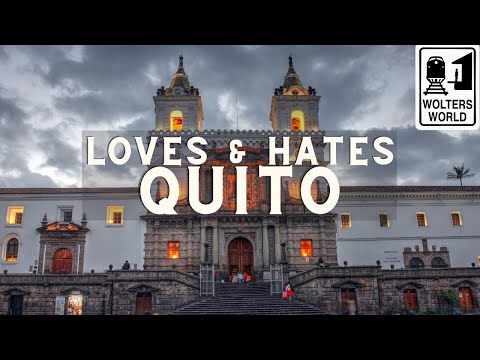
Quito, the capital of Ecuador, is a city that boasts an extraordinary blend of old and new, nestled high in the Andes at 2,850 meters above sea level. It is one of the highest capitals in the world and the closest to the equator. Quito’s rich pre-Columbian history, vibrant culture, and breathtaking landscapes make it a unique destination for travelers. However, like any major city, it comes with its own set of challenges and downsides. Here we explore both the best and worst aspects of Quito to give you a comprehensive view of this fascinating city.
### The Best of Quito
#### Cultural Richness
Quito’s historical center is a UNESCO World Heritage Site, famous for its well-preserved colonial architecture which includes monasteries, museums, and churches such as the Compañía de Jesús and San Francisco. The city offers a deep dive into its diverse cultural heritage through these historical landmarks.
#### Natural Beauty
Surrounded by volcanic peaks, Quito offers stunning views and unique opportunities for outdoor activities. Pichincha Volcano provides hiking trails accessible via a short cable car ride from the city. Furthermore, being close to both Amazonian rainforests and mountainous landscapes affords visitors incredible biodiversity to explore.
#### Vibrant Local Cuisine
Ecuadorian cuisine is a delightful experience in Quito; from street food to high-end restaurants. Specialties include ‘locro de papa’ (a potato-based soup), ’empanadas de viento’ (cheese-stuffed fried pastries), and ‘ceviche’ (fresh seafood marinated in citrus juices).
#### Artistic Hub
The city is also a hub for artists with La Floresta neighborhood acting as a cultural hotspot featuring galleries, murals, indie cinemas, and theaters presenting everything from local to international works.
### The Worst of Quito
#### Altitude Sickness
One cannot ignore the altitude at which Quito sits. Newcomers can suffer from soroche or altitude sickness which might include symptoms like headaches, dizziness, nausea, and fatigue. Acclimatization takes time or occasionally medical intervention.
#### Safety Concerns
As with many cities worldwide, crime can be an issue especially in less touristy areas or after dark. Pickpocketing and petty theft are common complaints among tourists hence it’s advisable to remain vigilant about personal belongings and avoid certain areas at night.
#### Traffic Congestion
Quito suffers from significant traffic congestion. With narrow streets in older parts of town not built for heavy traffic combined with growing car ownership rates result in frequent jams during rush hours.
#### Pollution
Being surrounded by mountains creates another issue for Quito – pollution tends to get trapped in the valley especially during dry seasons leading to poor air quality days that could affect health particularly for those with respiratory issues.
### Balancing Both Sides
While planning your trip to Quito it’s important to weigh these pros and cons carefully; however most travelers find that its charm vastly outweighs its drawbacks. Preparing adequately for altitude sickness by scheduling gradual acclimatization days into your itinerary can alleviate one major concern while taking usual safety precautions can mitigate another primary issue faced by travelers worldwide – security.
Ultimately visiting Quito offers an enriching experience filled with breathtaking views historical insights vibrant street arts tantalizing cuisines all entwined within this Andean capital’s lively ambiance making it worthy of its esteemed position on global travel lists despite its imperfections.
